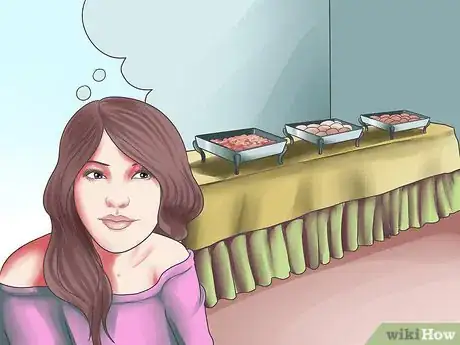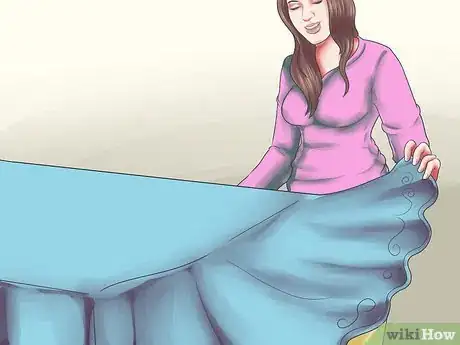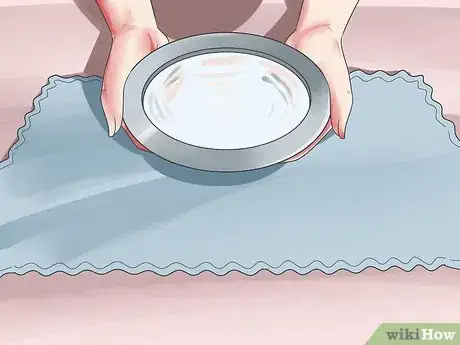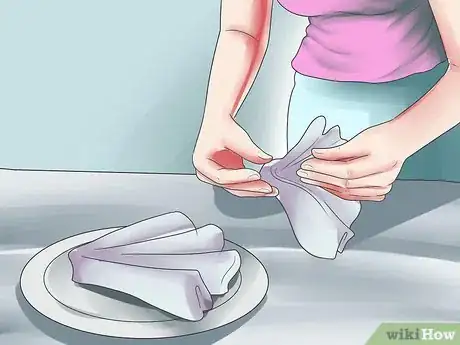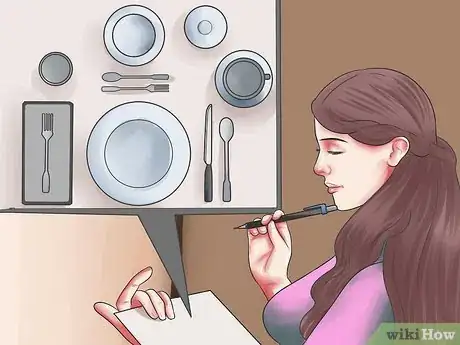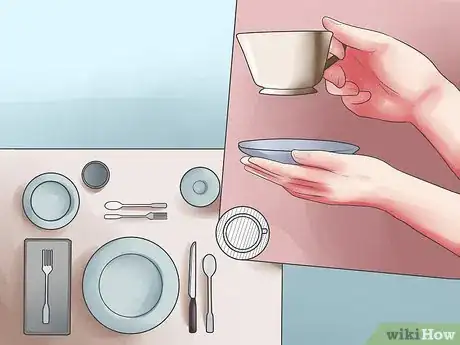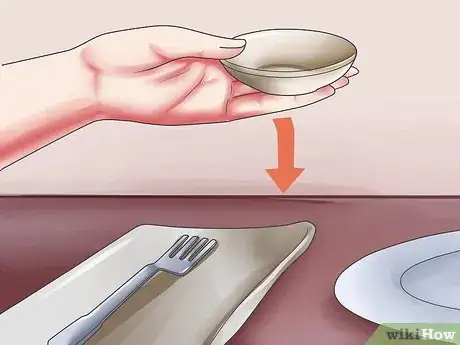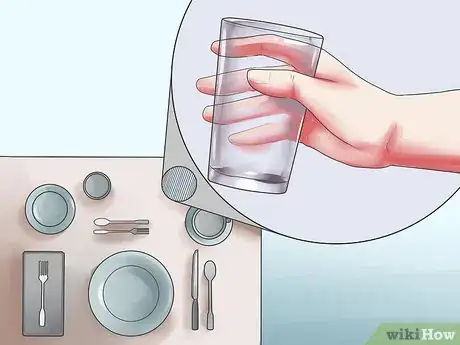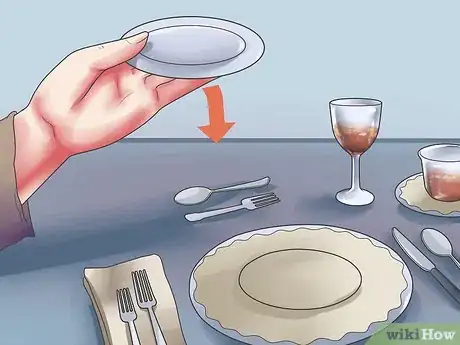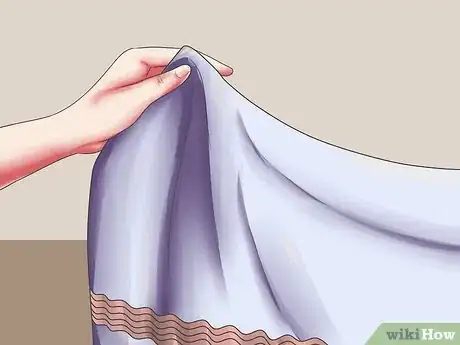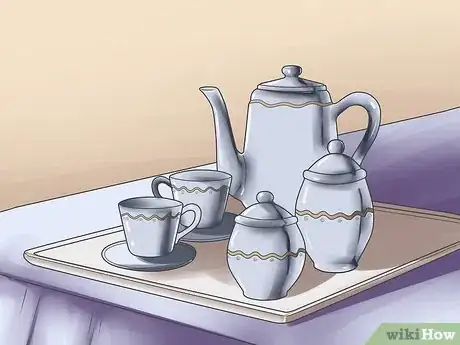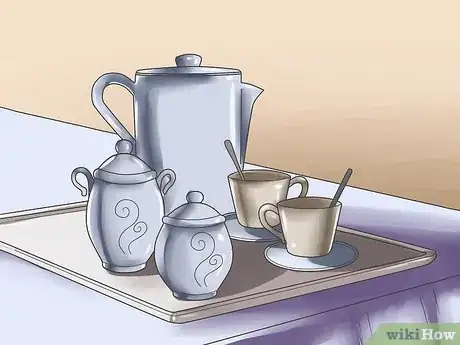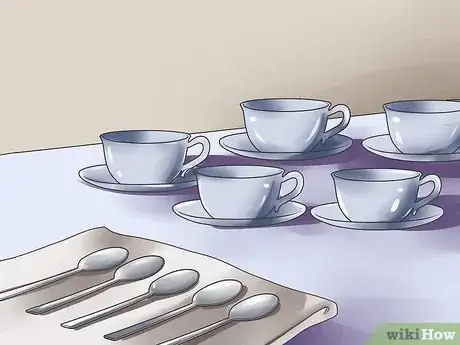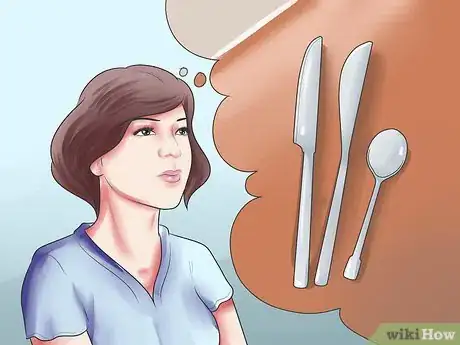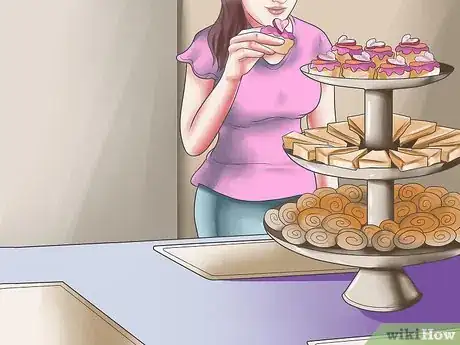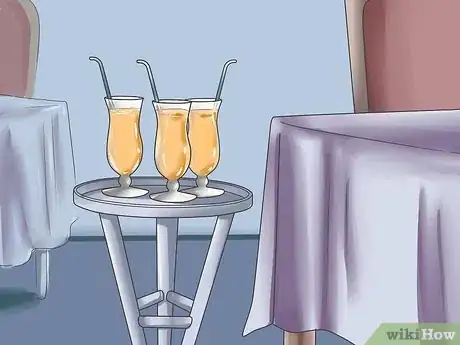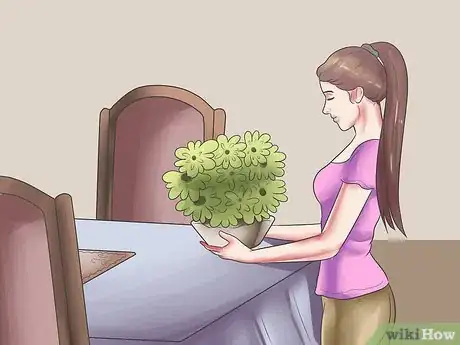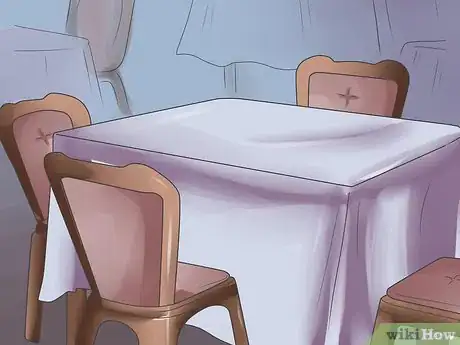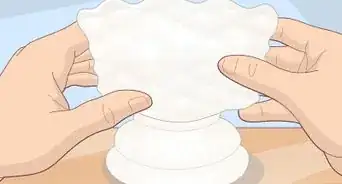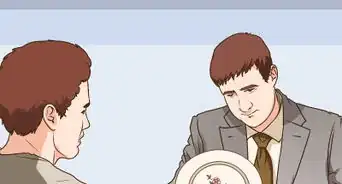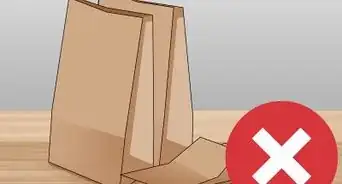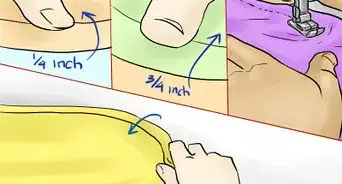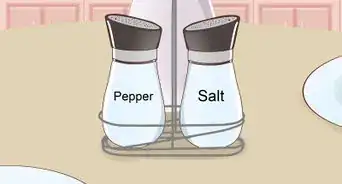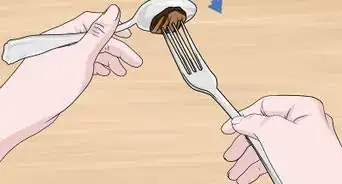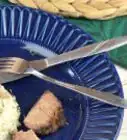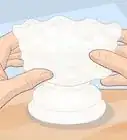This article was co-authored by Tami Claytor. Tami Claytor is an Etiquette Coach, Image Consultant, and the Owner of Always Appropriate Image and Etiquette Consulting in New York, New York. With over 20 years of experience, Tami specializes in teaching etiquette classes to individuals, students, companies, and community organizations. Tami has spent decades studying cultures through her extensive travels across five continents and has created cultural diversity workshops to promote social justice and cross-cultural awareness. She holds a BA in Economics with a concentration in International Relations from Clark University. Tami studied at the Ophelia DeVore School of Charm and the Fashion Institute of Technology, where she earned her Image Consultant Certification.
wikiHow marks an article as reader-approved once it receives enough positive feedback. In this case, 100% of readers who voted found the article helpful, earning it our reader-approved status.
This article has been viewed 180,303 times.
A simple tea party with friends doesn't require strict rules of etiquette, but it's still useful to know how to present the sugar, milk, and other tea options. For a larger event, learn how to arrange formal place settings, or skip straight to the food section if you wish to host a buffet-style event where guests can help themselves.
Steps
Setting Formal Place Settings
-
1Decide what type of tea party you are hosting. Most people hosting a "tea party" think of an afternoon event that takes place between mealtimes and provides small snacks, such as small sandwiches or scones. These can be "buffet style" and require no place settings at all, or they may be sit-down affairs with a limited selection of tableware and utensils, as a full meal is not served. If you are hosting a formal evening event, you will likely need several more implements depending on what type of food is served. Either way, be sure to read the steps below carefully so you can determine what is necessary for your tea party.
- The evening meal is properly referred to as "high tea," although the term is frequently misused to mean any type of tea.
-
2Cover a large table with an attractive tablecloth. For a sit-down tea party, the table or tables must be able to seat every guest at once. For most tea parties, the food should all fit in the center of the table. If you are serving a full meal in the evening, generally referred to as a "high tea" rather than an afternoon tea party, you only need enough room for one course at a time.Advertisement
-
3Place plates in the center of each place setting. Unless you are serving a full meal with more than one course, the guests are typically provided with one plate only. Ideally, this should be a luncheon plate 9 to 9.5 inches (23–24 cm) across, but you may use plates of other sizes if necessary.[1]
-
4Fold a linen napkin, or serviette, for each guest. Fold each napkin into a rectangle, square, or triangle, then place to the left of the plate with the open edge on the right side.[2] However, if you need to save space at your table, you may place each napkin on the center of a plate.
-
5Lay out the cutlery. You may only need to provide one or two utensils per guest, depending on what food is served. At minimum, place a small spoon on the right of each plate for stirring tea. If you are serving sticky cakes or messy foods, also provide a small fork on the left of each plate, and one or more knives between the plate and the spoon, with the blades facing the plate.[3] [4]
- Provide steak knives if meat is served.
- Provide butter knives for each guest when serving jams or other spreads, located to the right of the steak knife if present. Note that each spread should still have its own serving spoon.
- If serving a full evening meal with multiple courses, provide appropriate utensils for each course, arranged so the guests begin with the utensils furthest from the plate, and end with those nearest.
-
6Arrange the teacups and saucer. Each guest should have a teacup resting on a saucer. Place each teacup to the right of the spoon(s) at that place setting.
-
7Set down a small waste bowl for each guest if you have them. Waste bowls are typically the smallest piece of tableware, placed on the left of each place setting, above the napkin or fork. Guests place used tea leaves or lemon wedges in the waste bowl.
- Because the waste bowl is one of the most specialized components of the tea service, only the most formal guests are likely to be surprised if you do not own any.
-
8Place additional glasses as necessary. Provide water glasses for each guest above the knives, or above the teacup if no knives are present. If serving additional refreshments such as lemonade or champagne, select appropriate additional glasses to position to the right of the water glass.
-
9Consider an additional dessert plate. Include a small dessert plate or dessert bowl if a special dessert is being served, such as birthday cake. Center this above the main plate and include a small dessert fork and/or spoon as appropriate, placed horizontally between the two plates.
- This is not required for small, sweet snacks provided for the guests to help themselves.
Arranging the Food
-
1Select a suitable table to hold the food. The table should be large enough to fit the tea service, tableware, and food. If it is not large enough to also seat the guests, remove the chairs and host a buffet-style tea party where the guests help themselves. This is less formal than a seated tea party, and is most suitable for a light afternoon tea rather than an evening meal.
- Use your judgement when placing a buffet-style table: if space is a concern, move it against a wall. If you have plenty of room, consider placing it so the table is accessible from both sides, allowing more guests to access the food at one time.
-
2Choose a nice tablecloth and linen napkins, or serviettes. Using a clean, attractive tablecloth increases the sense of elegance and attention to detail. White linen is traditional, but you may use a tablecloth of any color or pattern.[5] For a formal tea party, select napkins that match the tablecloth.
-
3Set up the tea service on one end of the table. Brew tea in several varieties for your guests, including at minimum one caffeinated black tea and one non-caffeinated herbal tea. Each variety of tea should be in its own teapot, preferably with the tea leaves removed or within a strainer so guests do not end up with tea leaves in their cups. You do not need to use a matching tea service or silver tray if you do not own them, but don't forget to provide all the essential tea additions:
- A creamer, or small pitcher, containing milk
- A bowl of sugar containing sugar cubes and sugar tongs, or granulated white sugar and a small spoon
- A pitcher of hot water for people who prefer to dilute their tea[6]
- A tray of lemon slices for floating in tea, or thicker lemon wedges covered in gauze or other material to prevent spurting when squeezed[7]
-
4Set up coffee, hot cocoa, or an additional tea tray on the other end of the table. Unless you have a small number of guests, you may wish to set up two stations for guests to serve themselves hot beverages. Coffee or hot cocoa is appreciated by some guests who do not enjoy tea, but if you know your guests are all tea-drinkers, you may simply provide a variety of tea options instead.
- Provide all the necessary tea additions on both ends of the table. If serving coffee, only sugar and cream are necessary at the coffee station.
-
5Provide small plates, teacups, and spoons. If you are hosting a sit-down tea party, see the section on formal place settings. For a buffet style party, stack these neatly at both ends of the table, or at one end if space is limited. You will need at minimum one small plate, one teacup, and one small stirring spoon for each guest. It's a good idea to include extras in case of accidents, mislaid plates, or unexpected guests.
- If you do not own enough tea cups, consider borrowing them from neighbors or hosting a casual "bring your own teacup or coffee cup" party. Many inveterate tea or coffee drinkers have favorite cups at home, but be prepared to provide a few extras for guests who do not bring one.
-
6Remember additional tableware and cutlery if the food requires it. If serving food that cannot be eaten by hand, include forks and knives next to the other cutlery. Soup requires small bowls and soup spoons, whereas pudding and other soft desserts require smaller dessert spoons. Small dishes of jam, clotted cream, or other additions to toast or scones should each have their own small serving spoon.
- If you are not certain which foods to serve, see the suggestions below. Typically, an afternoon tea party does not serve food that requires cutlery. This makes it easier for guests to serve themselves at the table, and to walk around and talk while holding a plate of food.
-
7Provide savory and sweet foods on the middle of the table. Small sandwiches with the crusts cut off are the most common savory food at afternoon tea parties, but deviled eggs are also common in some areas such as the American South.[8] Provide at least one tray or large plate with a tidy assortment of these or similar small, savory foods. On another area of the table, place trays or plates of sweet foods, such as English-style biscuits (cookies), small cakes, and/or scones.
- If using three-tiered cake stands instead of trays, the traditional arrangement is to place scones on the top tier, tea sandwiches and savory snacks on the middle tier, and sweet food on the bottom tier.[9]
-
8Provide cold drinks on a side table, or the main table if no side table is available. If you have a side table, set it up far enough from the main table that guests can reach one without blocking access to the other. This is a good place to provide cold drinks such as lemonade or iced tea. Alcohol is not typically served during small afternoon teas, but larger or more celebratory occasions may call for champagne, white wine, sherry, or port.
- Another tray of snacks may be provided on this side table if desired.
-
9Decorate the table (optional). Decorations are typically bright and cheery to match the afternoon setting, but you may provide any decorations you wish. Flowers are a common decoration, but try to avoid strong-scented bouquets that could bother guests or set off allergies. Instead, strew a few rose petals around or place a small vase of unscented or lightly scented flowers.
- Make sure not to block access to the food or overcrowd the table with large or unwieldy decorations. Decorating after you've placed the food and drinks on the table allows you to adjust to the remaining space on the table.
-
10Make seating available elsewhere (optional). Most afternoon teas serve only "finger food" such as scones, sandwiches, and biscuits. Because these are easy to eat while standing or seated away from a table, setting a formal dining table is not required. If you have enough room to seat every guest, you may provide chairs or couches in a living room or garden.
- One option for large tea parties is to set up smaller coffee tables with a few chairs at each one. Cover each table with a matching tablecloth if possible.
Expert Q&A
-
QuestionWhere do I set cutlery on the table?
 Tami ClaytorTami Claytor is an Etiquette Coach, Image Consultant, and the Owner of Always Appropriate Image and Etiquette Consulting in New York, New York. With over 20 years of experience, Tami specializes in teaching etiquette classes to individuals, students, companies, and community organizations. Tami has spent decades studying cultures through her extensive travels across five continents and has created cultural diversity workshops to promote social justice and cross-cultural awareness. She holds a BA in Economics with a concentration in International Relations from Clark University. Tami studied at the Ophelia DeVore School of Charm and the Fashion Institute of Technology, where she earned her Image Consultant Certification.
Tami ClaytorTami Claytor is an Etiquette Coach, Image Consultant, and the Owner of Always Appropriate Image and Etiquette Consulting in New York, New York. With over 20 years of experience, Tami specializes in teaching etiquette classes to individuals, students, companies, and community organizations. Tami has spent decades studying cultures through her extensive travels across five continents and has created cultural diversity workshops to promote social justice and cross-cultural awareness. She holds a BA in Economics with a concentration in International Relations from Clark University. Tami studied at the Ophelia DeVore School of Charm and the Fashion Institute of Technology, where she earned her Image Consultant Certification.
Etiquette Coach Your forks go on the left side of your plate, and your knives and spoons go on the right side.
Your forks go on the left side of your plate, and your knives and spoons go on the right side. -
QuestionCan I wear a short black dress to an evening tea party?
 Community AnswerIt is traditionally unacceptable to wear a dress that is less than thigh length, so consider this when deciding on your outfit as to not offend anyone at the tea party.
Community AnswerIt is traditionally unacceptable to wear a dress that is less than thigh length, so consider this when deciding on your outfit as to not offend anyone at the tea party. -
QuestionWhat do I serve if the tea is mid-morning, like 10:30 to 11:00?
 Community AnswerOffer toast or other breakfast finger foods, such as biscuits or digestives.
Community AnswerOffer toast or other breakfast finger foods, such as biscuits or digestives.
Things You'll Need
- Tablecloth
- Chairs
- Plates
- Tea cups
- Spoons
- Vase with flowers
- Rose petals sprinkled around the table
- Cake stands
References
- ↑ http://www.etiquettescholar.com/dining_etiquette/table_setting/place_setting/dinnerware/plates.html#luncheon_plate
- ↑ http://whatscookingamerica.net/EllenEaston/EtiquetteFauxPas.htm
- ↑ Tami Claytor. Etiquette Coach. Expert Interview. 20 May 2021.
- ↑ http://www.etiquettescholar.com/dining_etiquette/tea_etiquette.html
- ↑ http://whatscookingamerica.net/EllenEaston/BuffetTea.htm
- ↑ http://www.etiquettescholar.com/dining_etiquette/tea_etiquette.html
- ↑ http://whatscookingamerica.net/EllenEaston/EtiquetteFauxPas.htm
- ↑ http://whatscookingamerica.net/EllenEaston/BuffetTea.htm
- ↑ http://whatscookingamerica.net/EllenEaston/EtiquetteFauxPas.htm
About This Article
To set a table for a tea party, start by setting a plate in the center of each place setting. Then, fold a napkin into a rectangle, square, or triangle and place it on the center of each plate. Next, place a spoon to the right of each plate for stirring tea, and put any other utensils your guests will need to the left of each plate and between each plate and spoon. You'll also want to place a teacup resting on a saucer to the right of each guest's spoon. If you'll be serving dessert, include a small dessert plate above the main plate. To learn how to decorate a table for a tea party and arrange the food, scroll down!
